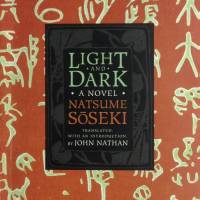"Light and Dark" is one of the late Natsume Soseki's longest and most famous masterpieces. Although the allure is partly due to its lack of a concrete ending because of Soseki's untimely death, the novel (sans ending) is still considered to be one of the best pieces of Japanese contemporary literature, and a prime example of Japanese society on the cusp of World War I.
At the time of it's original publication in 1916, it was rare for Japanese literary works to provide such an in-depth psychological character study — in this case detailing the plight of a young married couple living within a culture that avoids confrontation, amidst the backdrop of a country in steep transition.
The plot centers on Tsuda Yoshio and his young wife, O-Nobu. As Yoshio is recovering from surgery in a clinic, he discovers a former lover is staying alone in a nearby resort recovering from a miscarriage. Intrigued, he ventures outside, facing both psychological and physical obstacles, to reunite with his former flame. This revelation tests the bounds of his young marriage, creating friction amongst all parties involved. Yoshio's eccentric family members serve as secondary characters, all featuring subplots and character arcs that intermingle in expertly crafted fashion.
This new translation by University of California professor John Nathan updates the prose in both tone, style and, of course, meaning. With previous translations poorly received in the past, Nathan prefaces the novel by stating his intention was to provide the English speaker with an identical experience as a native Japanese.


















With your current subscription plan you can comment on stories. However, before writing your first comment, please create a display name in the Profile section of your subscriber account page.